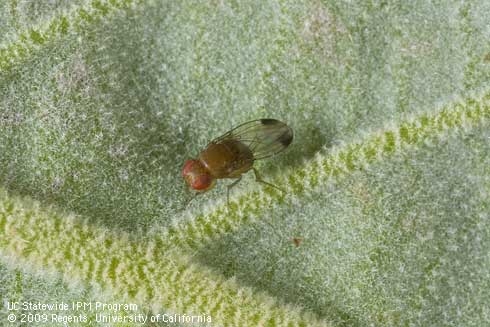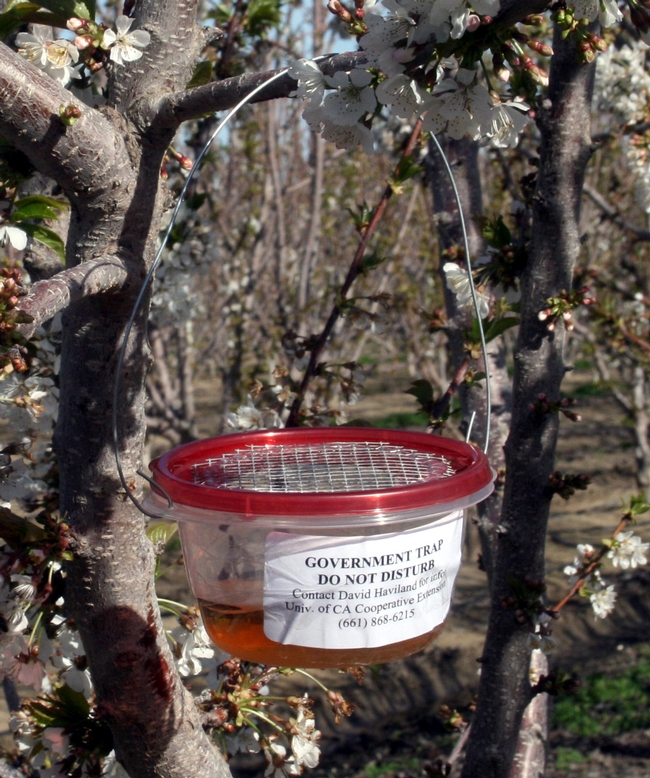
Posts Tagged: cherries
It's Time to Prune Apricot & Cherry Trees
Although most fruit trees are pruned during the dormant season, in areas with wet winters, apricots...
Warmer winter is hurting California cherry crop
The drought isn't helping matters, but the primary concern for cherry farmers in California is the lack of winter chill, reported Lisa Morehouse on KQED's The California Report.
Morehouse spoke to Bill Coates, a UC Agriculture and Natural Resources expert based at the UC Cooperative Extension office in San Benito County. He said cherries are more sensitive than other crops to a lack of chill hours. Because of a warming weather trend during the winter, bing cherry trees look confused about what season it is.
“You have some ripe cherries, you have some blossoms, some branches that are almost devoid of leaves, and you have some buds that are still dormant,” he explains. “And this is all a result of lack of chilling.”
Bing cherries need about 1,000 hours under 45 degrees for healthy dormancy. Last year San Benito County got just over 500 hours.
"People may disagree on the cause of the change," Coates says, "but there definitely has been a change in the climate, and it's going to impact tree crops greatly."
Be on the lookout for spotted wing drosophila

Unlike other fruit flies that infest rotted fruit, SWD attacks undamaged fruit. As cherry fruit begins to develop and starts to change color from light green to straw, SWD lays its eggs just under the skin of fruit, creating a small scar or a“sting.” One to three larvae may develop inside each cherry, feeding on the fruit and causing it to become brown and soft. Many times SWD flies are not noticed until fruit is mature, and by that time management is not very effective.

Spotted wing drosophila is still a relatively new pest, and management information continues to change. David Haviland, UC Cooperative Extension advisor in Kern County, and other researchers have been working to provide what help they can. Haviland has designed a bucket trap called the “Haviland trap” and is working with others to field-test experimental lures for SWD. He's also studying a possible biological control agent. Research has led to new grower guidelines so that early season cherries can be produced and sold internationally. Check out the 2014 Recommendations for Sweet Cherry (PDF).
For management in backyard cherries or other urban areas, see the SWD Pest Note.
For more information about UC IPM's recent work, see the 2013 Annual Report.
California cherry crop 'unusually light'

Joe Grant, UC Cooperative Extension advisor in San Joaquin County, said the cherry crop is light throughout the area, across orchards and varieties.
"That rules out orchard-to-orchard factors, management factors or disease factors," he said.
Crop losses are often weather-related, but early frosts, or wet or cold weather during the bloom were not factors.
"Right now, the only candidate ... is we had quite warm weather for a couple of days during bloom," Grant said. That heat may have affected pollination and reduced the amount of fruit each tree carries.
On the bright side, the fruit looks to be of good quality.
Farmers turning in greater numbers to mechanical harvesting

Some cherry growers, for example, were able to pick only once this year, said Chuck Ingels, UC Cooperative Extension advisor in Sacramento County. Ideally, they'd pick as fruit colors and ripens.
"They're finding that if they can't get labor to pick their crops, they're just not able to farm anymore," Ingels said. "So what they're going to is mechanization."
UC Davis agriculture experts, farmers and industry leaders gathered last month in Orland to watch a demonstration of the first mechanical harvest of Manzanilla table olives in California. The new technology could revive the industry, the article said.
Even pear harvesting, a grueling job that requires workers to climb aluminum ladders with heavy bags of fruit, may be ripe for new harvest technology. For apples and pears, there are platforms for workers to stand on that move through the orchard while the workers feed the fruit into flexible tubes, where suction carries the fruit to bins.
"It's definitely on the radar for growers in the industry," Ingels said.


